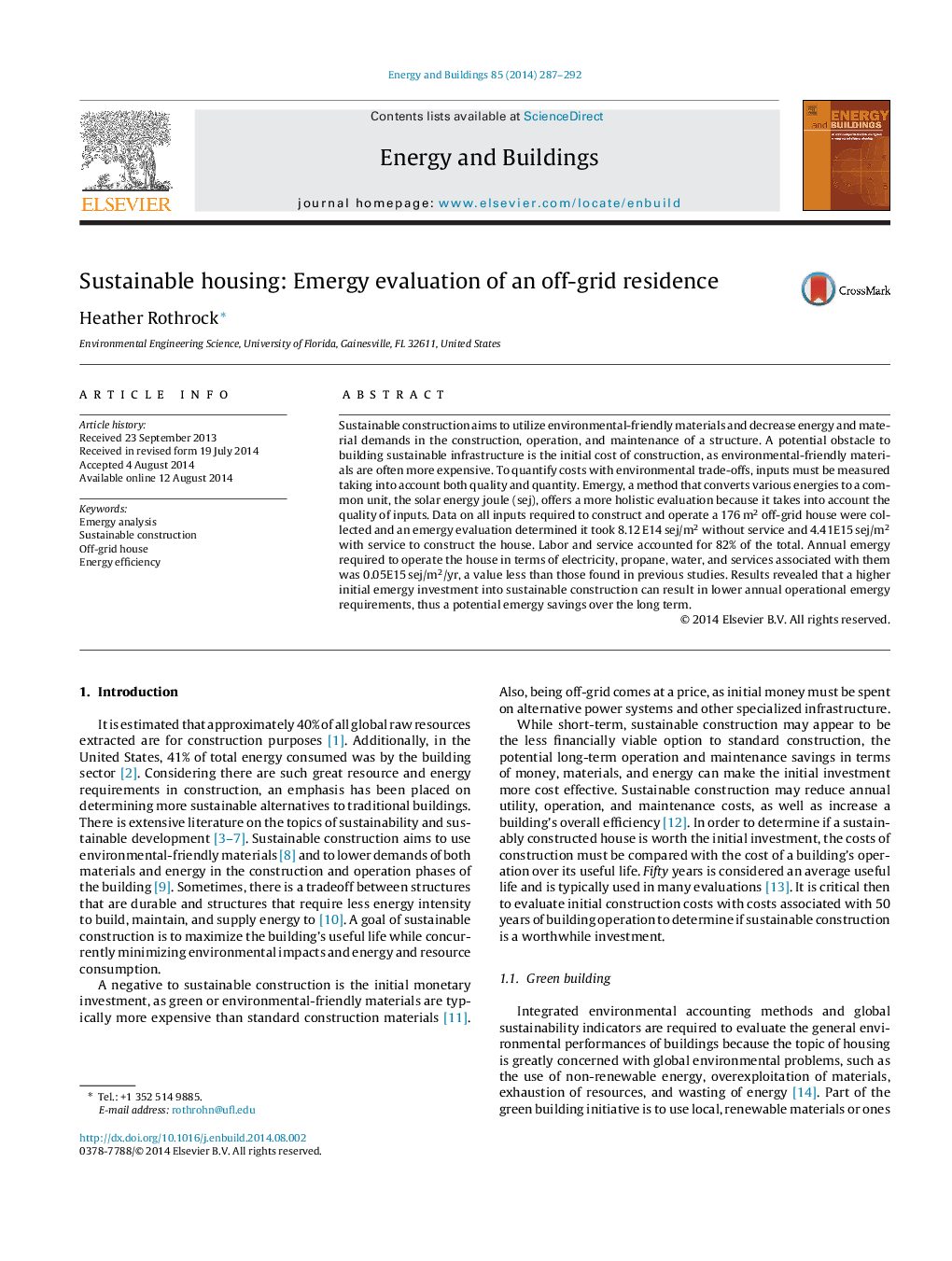| Article ID | Journal | Published Year | Pages | File Type |
|---|---|---|---|---|
| 6733163 | Energy and Buildings | 2014 | 6 Pages |
Abstract
Sustainable construction aims to utilize environmental-friendly materials and decrease energy and material demands in the construction, operation, and maintenance of a structure. A potential obstacle to building sustainable infrastructure is the initial cost of construction, as environmental-friendly materials are often more expensive. To quantify costs with environmental trade-offs, inputs must be measured taking into account both quality and quantity. Emergy, a method that converts various energies to a common unit, the solar energy joule (sej), offers a more holistic evaluation because it takes into account the quality of inputs. Data on all inputs required to construct and operate a 176Â m2 off-grid house were collected and an emergy evaluation determined it took 8.12Â E14Â sej/m2 without service and 4.41E15Â sej/m2 with service to construct the house. Labor and service accounted for 82% of the total. Annual emergy required to operate the house in terms of electricity, propane, water, and services associated with them was 0.05E15Â sej/m2/yr, a value less than those found in previous studies. Results revealed that a higher initial emergy investment into sustainable construction can result in lower annual operational emergy requirements, thus a potential emergy savings over the long term.
Related Topics
Physical Sciences and Engineering
Energy
Renewable Energy, Sustainability and the Environment
Authors
Heather Rothrock,
